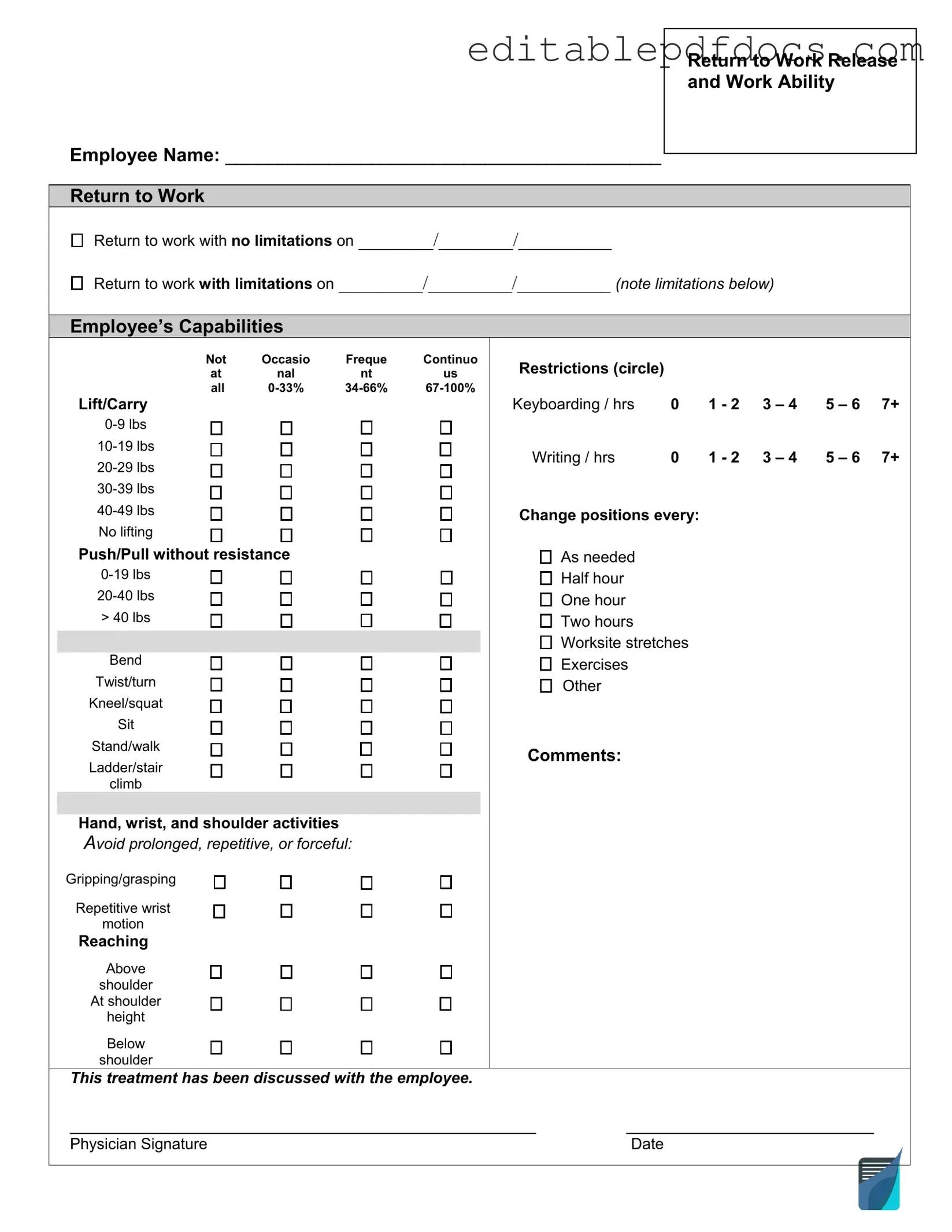Fill a Valid Work Release Template
The Work Release form is a document that allows individuals to leave their usual environment, such as a correctional facility, for work-related purposes. This form ensures that individuals can fulfill their job responsibilities while still adhering to legal requirements. To get started, fill out the form by clicking the button below.
Open Editor Now
